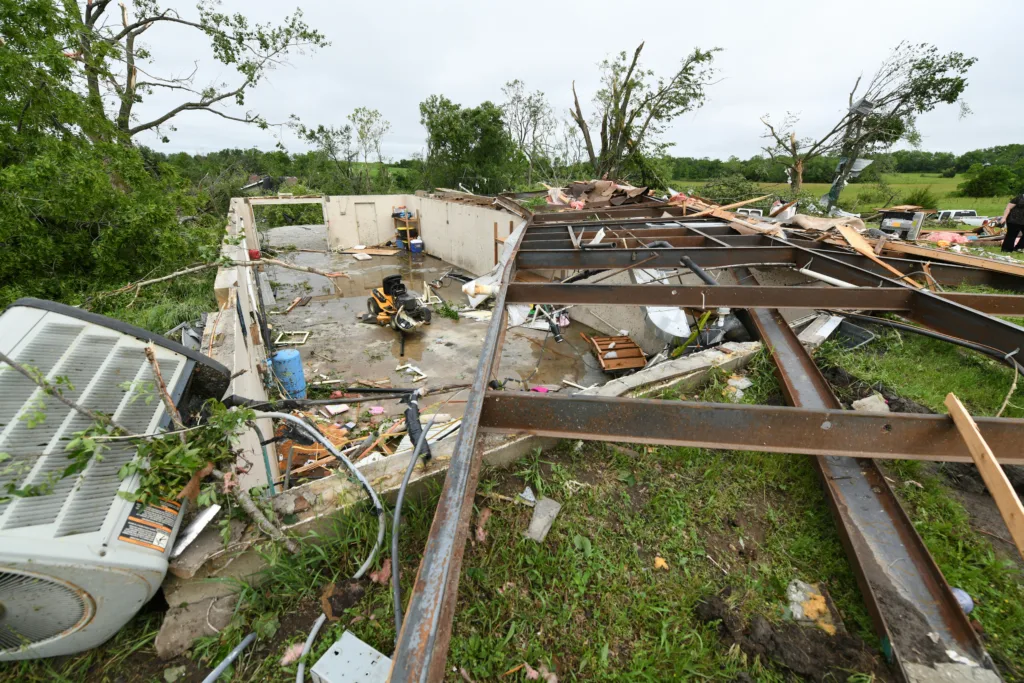In today’s unpredictable world, it is crucial to be prepared for any potential disaster that may strike your neighborhood. By organizing a Neighborhood Safety Committee for Disaster Preparedness, you can empower your community and ensure the safety of its residents in times of crisis. This article will provide you with a comprehensive guide on how to establish and effectively run a neighborhood safety committee, covering the key steps involved, the roles and responsibilities of committee members, and the measures that can be taken to enhance disaster preparedness within your community. By implementing these strategies, you can create a strong and resilient neighborhood that is well-equipped to handle any emergency situation.
Table of Contents
Setting up a Neighborhood Safety Committee
Identify a core group of community members
Setting up a Neighborhood Safety Committee is a crucial step in improving the safety and preparedness of your community. To begin, it is essential to identify a core group of community members who are passionate about creating a safer neighborhood. These individuals should be dedicated, knowledgeable, and willing to contribute their time and efforts to the committee’s goals. Look for individuals with a range of skills and expertise, such as emergency response, communication, and organization. Engaging a diverse group will ensure a well-rounded committee with a wide range of perspectives and ideas.
Hold an initial meeting
Once you have identified the core group of community members, it is time to hold an initial meeting. This meeting should serve as a platform to introduce the committee’s objectives, discuss the importance of neighborhood safety, and gauge the interest and commitment of potential members. During the meeting, provide an overview of the committee’s goals and objectives, emphasizing the significance of their role in disaster preparedness. Encourage attendees to actively participate by sharing their thoughts, concerns, and ideas. By fostering an open and inclusive environment, you can create a strong foundation for the committee’s work.
Establish roles and responsibilities
To ensure the smooth functioning of the Neighborhood Safety Committee, it is essential to establish clear roles and responsibilities for each committee member. Assigning specific roles will help streamline decision-making processes and ensure that tasks are appropriately delegated. Some possible roles to consider include chairperson, secretary, treasurer, and committee coordinator. The chairperson will oversee the overall operations of the committee, the secretary will handle administrative tasks such as meeting minutes and correspondence, the treasurer will manage the committee’s finances, and the coordinator will oversee specific initiatives and projects. Determining roles and responsibilities from the start will set expectations and create accountability within the committee.
Develop a communication plan
Effective communication is vital for the success of any committee. Develop a comprehensive communication plan that outlines how information will be disseminated both within the committee and to the broader community. Consider establishing regular meetings, email updates, and a dedicated communication platform to ensure efficient and timely communication. It is crucial to maintain transparency and ensure that all committee members are kept informed about ongoing projects, developments, and upcoming events. Additionally, the committee should maintain open lines of communication with the community, encouraging feedback, input, and suggestions from residents.
Creating a Disaster Preparedness Plan
Conduct a risk assessment
Before creating a disaster preparedness plan, it is essential to conduct a thorough risk assessment to identify potential hazards and vulnerabilities within the neighborhood. Collaborate with local emergency management agencies or seek expert assistance to assess the risk factors specific to your area. Evaluate factors such as flood zones, earthquake susceptibility, and proximity to hazardous facilities. By conducting a comprehensive risk assessment, the committee can gain valuable insights into the potential threats and tailor their disaster preparedness plan accordingly.

Identify and prioritize potential hazards
Once the risk assessment is complete, it is crucial to identify and prioritize the potential hazards specific to your neighborhood. Conduct a thorough analysis of the identified risks and categorize them based on their severity and likelihood. This process will enable the committee to focus their efforts on the hazards that pose the greatest threat to the community. Prioritizing potential hazards will allow for the allocation of resources and efforts towards developing effective response and mitigation strategies.
Create evacuation and shelter plans
In the event of a disaster, having well-defined evacuation and shelter plans in place is of utmost importance. The Neighborhood Safety Committee should work closely with local emergency management agencies to develop comprehensive and efficient evacuation routes and safe shelter locations. Take into consideration factors such as accessibility, proximity to essential services, and capacity when selecting appropriate shelter locations. Document these plans and ensure that they are easily accessible to all community members.
Establish a disaster supply kit
Every household should have a disaster supply kit to sustain them in the event of an emergency. The Neighborhood Safety Committee should educate community members on the importance of having a well-stocked disaster supply kit and provide guidelines on what should be included. This kit should contain essential items such as non-perishable food, water, medications, first aid supplies, batteries, flashlights, and hygiene products. The committee can organize workshops or training sessions to guide residents in assembling their disaster supply kits and update them on any changes or recommendations from emergency management agencies.
Training and Education
Provide first aid and CPR training
Being trained in first aid and CPR can be invaluable during emergencies. The Neighborhood Safety Committee should collaborate with local healthcare providers or organizations to provide residents with access to first aid and CPR training. Organize workshops or training sessions that are readily available and easily accessible to community members. These trainings will equip residents with the necessary skills to handle medical emergencies and potentially save lives.
Offer emergency response and preparedness courses
In addition to first aid and CPR training, offering emergency response and preparedness courses is essential for building a resilient community. Partner with local emergency management agencies, fire departments, or community organizations to provide residents with comprehensive training on emergency response procedures. These courses should cover topics such as evacuations, sheltering, communication protocols, and disaster mitigation strategies. By equipping residents with knowledge and skills, the community becomes better prepared to handle emergencies effectively.

Educate on fire safety measures
Fire safety is a critical aspect of disaster preparedness. The Neighborhood Safety Committee should educate residents on fire safety measures to reduce the risk of fires and promote a safe living environment. This can include organizing fire safety workshops, providing information on fire prevention, and distributing fire extinguishers to households. Collaborate with local fire departments to ensure the accuracy and relevance of the educational materials provided.
Teach basic search and rescue techniques
During disasters, search and rescue operations are often required to locate and assist individuals in distress. The Neighborhood Safety Committee should offer basic search and rescue training to residents to enhance community resilience. Partner with local emergency management agencies or organizations specializing in search and rescue to provide training on techniques such as assessing structural stability, performing safe extrications, and locating missing persons. This training will enable residents to assist in the immediate aftermath of a disaster until professional help arrives.
Establishing Neighborhood Watch Program
Recruit and train volunteers
Establishing a Neighborhood Watch Program is an effective way to deter crime and enhance the safety of the community. Recruit volunteers from the neighborhood to participate in the program. These volunteers should undergo thorough background checks and receive adequate training on crime prevention, reporting, and personal safety. Collaborate with local law enforcement agencies to provide training materials and support for volunteers.
Develop a reporting system
To create an efficient Neighborhood Watch Program, it is essential to establish a reliable and user-friendly reporting system. This system should enable residents to report suspicious activities or incidents promptly. Explore options such as dedicated phone lines, online reporting forms, or mobile applications that make reporting easy and accessible. The Neighborhood Safety Committee should regularly review and analyze reported incidents in order to identify patterns or trends and initiate appropriate preventive measures.
Implement crime prevention strategies
Working in conjunction with local law enforcement agencies, the Neighborhood Safety Committee should devise and implement effective crime prevention strategies. This can include conducting community-wide awareness campaigns, organizing neighborhood patrols, and implementing security measures such as improved lighting and surveillance systems. By actively engaging residents and implementing preventive measures, the committee can create a safer environment and discourage criminal activities.

Coordinate with local law enforcement
Building a strong partnership with local law enforcement agencies is crucial for the success of a Neighborhood Watch Program. Regular communication and collaboration with law enforcement will facilitate the exchange of information, resources, and support. Establish regular meetings or liaisons with law enforcement representatives to discuss crime trends, community concerns, and joint initiatives. By working together, the committee and local law enforcement can create a harmonious and vigilant community.
Collaborating with Local Agencies
Liaise with fire department
The Neighborhood Safety Committee should establish a strong working relationship with the local fire department. Engage with fire department representatives to discuss fire safety initiatives, conduct joint training sessions, and promote community awareness. Collaborate on projects such as annual fire safety inspections, smoke alarm installations, and fire prevention campaigns. The expertise and resources of the fire department can be invaluable in enhancing the overall safety and preparedness of the neighborhood.
Connect with medical facilities
Establishing connections with medical facilities is vital for ensuring effective emergency medical response in the neighborhood. Work with local hospitals, clinics, and paramedic services to establish protocols for medical emergencies and coordinate efforts for disaster response. This collaboration can include conducting joint training sessions, sharing information on emergency medical resources, and improving communication channels between medical facilities and the Neighborhood Safety Committee.
Coordinate with local government
Collaboration with the local government is essential in aligning neighborhood safety initiatives with broader disaster preparedness efforts. The Neighborhood Safety Committee should establish regular communication with local government representatives, including city council members, emergency management personnel, and public safety officials. This collaboration can include sharing information, seeking funding for projects, and advocating for policies that prioritize neighborhood safety and disaster preparedness.
Partner with community organizations
Engage with local community organizations to leverage their resources, expertise, and reach. Partnering with organizations such as community centers, nonprofit organizations, or religious institutions can enhance the committee’s capacity to educate, train, and reach a wider audience. Collaborate on joint projects, host joint events, or establish working groups to tackle specific safety or preparedness initiatives. By pooling resources and working together, the committee and community organizations can effectively promote neighborhood safety and disaster preparedness.
Establishing Communication Channels

Set up a phone tree
Establishing a phone tree can greatly facilitate communication within the community during emergencies. Divide the neighborhood into smaller sections and assign a volunteer in each section as the phone tree coordinator. The coordinator will be responsible for contacting a predetermined number of households within their section and spreading important information or alerts. Regularly update and test the phone tree to ensure it functions effectively when needed.
Create a neighborhood alert system
Creating a neighborhood alert system is an efficient way to disseminate information quickly to the entire community. This can be done through various means, such as text messaging services, automated phone calls, or smartphone applications. Research available alert systems and select one that matches the needs and preferences of your community. Encourage residents to sign up for the alert system and regularly test its functionality to ensure proper operation.
Utilize social media platforms
Harness the power of social media platforms to communicate with residents and disseminate important information. Create dedicated social media pages or groups for the Neighborhood Safety Committee and encourage community members to follow or join them. Regularly update these platforms with safety tips, emergency alerts, and upcoming events. Additionally, social media can be an effective tool for fostering community engagement and encouraging residents to share their concerns or suggestions.
Establish a community newsletter
A community newsletter is an excellent way to maintain regular and consistent communication with residents. Create a newsletter that highlights the activities and initiatives of the Neighborhood Safety Committee, provides safety tips, and shares important updates. Distribute the newsletter through various channels, such as email, mail, or posting in community spaces. Encourage residents to contribute articles or share their experiences to foster a sense of community and engagement.
Conducting Regular Drills and Exercises
Organize disaster response drills
Regularly organizing disaster response drills is crucial for testing the effectiveness of the preparedness plans and identifying areas for improvement. Collaborate with local emergency management agencies or disaster response experts to plan and execute drills that simulate various disaster scenarios. These drills should involve community members, emergency responders, and relevant stakeholders. In addition to testing response procedures, drills provide an opportunity to educate residents on evacuation routes, communication protocols, and other critical aspects of disaster response.

Simulate various emergency scenarios
While disaster response drills are essential, it is equally important to simulate various emergency scenarios to prepare residents for a range of situations. Develop and execute simulations of scenarios such as wildfires, earthquakes, or severe weather events. These simulations can be conducted through tabletop exercises or interactive workshops. By providing residents with practical experience in different emergency scenarios, the Neighborhood Safety Committee can significantly enhance their preparedness and improve their ability to respond effectively.
Evaluate and improve response procedures
Following each drill or simulation, it is crucial to conduct thorough evaluations to assess the effectiveness of response procedures. Identify strengths, weaknesses, and areas for improvement based on the observations and feedback gathered. This evaluation should involve gathering input from community members, emergency responders, and other stakeholders who participated in the drills or simulations. Use these evaluations to update and refine response procedures, as well as to provide additional training or resources where needed.
Schedule practice sessions
Regular practice sessions are essential for maintaining the skills and knowledge acquired through training. Schedule practice sessions for residents on topics such as first aid, CPR, fire safety, and search and rescue techniques. These sessions can take the form of refresher courses, hands-on training, or workshops led by experts or experienced committee members. By providing ongoing opportunities for practice, the committee ensures that residents remain confident and well-prepared to respond during emergencies.
Building Resilient Infrastructure
Assess neighborhood buildings and structures
Conduct a thorough assessment of the existing buildings and structures within the neighborhood to identify potential vulnerabilities. Evaluate factors such as structural integrity, fire resistance, and accessibility. Engage with professionals such as architects, engineers, or building inspectors to assess the resilience of the neighborhood’s infrastructure. This assessment will provide a foundation for implementing necessary reinforcements and improvements to minimize the impact of disasters on buildings and structures.
Implement necessary reinforcements
Based on the assessment, identify areas that require reinforcements or upgrades to enhance the resilience of the neighborhood’s infrastructure. This may include measures such as reinforcing roofs, strengthening foundations, or adding seismic retrofits. Collaborate with relevant professionals, contractors, or construction companies to implement these necessary reinforcements. Ensure compliance with local building codes and regulations throughout the process to guarantee safety and durability.
Install emergency lighting and signage
During emergencies, reliable lighting and clear signage are critical for guiding residents and emergency responders. Assess the neighborhood’s lighting infrastructure and identify areas that need improvement. Install emergency lighting in key locations such as evacuation routes, communal areas, and critical facilities. Additionally, clearly visible and informative signage should be placed to guide residents to safety and emergency services. Regularly maintain and test emergency lighting and signage to ensure they are functional and reliable.
Ensure accessibility for people with disabilities
It is essential to ensure that the neighborhood’s infrastructure and emergency preparedness initiatives are accessible to individuals with disabilities. Consider the needs of residents with mobility impairments, hearing or visual impairments, or cognitive disabilities. Assess the accessibility of evacuation routes, shelters, and communication channels. Make appropriate modifications or accommodations to ensure equal access and inclusion for all community members. Engage with disability advocacy organizations for guidance on best practices and to ensure compliance with accessibility standards.
Engaging the Community
Host neighborhood meetings and events
Hosting neighborhood meetings and events is a valuable way to engage the community, promote safety, and foster a sense of belonging. Organize regular meetings where residents can come together, learn about recent developments, and provide input on safety initiatives. Additionally, plan community events that incorporate safety themes, such as safety fairs, workshops, or fun runs. These opportunities for social interaction and engagement will encourage residents to actively participate in neighborhood safety efforts.
Encourage community involvement and participation
Encouraging community involvement and participation is crucial for the success and sustainability of the Neighborhood Safety Committee. Develop volunteer opportunities and initiatives that allow residents to actively contribute to safety and preparedness efforts. Promote a culture of vigilance by encouraging residents to report suspicious activities, share safety tips, and participate in neighborhood patrols. Recognize and appreciate the contributions of individuals who actively engage in community safety initiatives to further motivate and inspire others.
Promote safety and preparedness through outreach programs
Reach out to schools, youth organizations, and other community groups to promote safety and preparedness among different demographics. Develop age-appropriate educational programs or workshops that focus on topics such as fire safety, emergency protocols, or personal safety. Engage children and young adults through activities or competitions that emphasize the importance of safety and preparedness. By instilling these values at a young age, the committee can build a resilient and safety-conscious community for the future.
Collaborate on community improvement projects
Community improvement projects not only enhance the aesthetic appeal of the neighborhood but can also contribute to safety and preparedness. Collaborate on projects such as neighborhood clean-ups, tree planting initiatives, or creating community gardens. These projects promote community bonding, improve the overall livability of the neighborhood, and create a sense of pride and ownership among residents. Additionally, they provide opportunities to address safety concerns or enhance disaster resilience within the community.
Maintaining and Updating the Committee
Hold regular committee meetings
To ensure the continuity and progress of the Neighborhood Safety Committee’s work, it is vital to hold regular committee meetings. These meetings provide an opportunity to discuss ongoing projects, address concerns, and plan future initiatives. Establish a consistent meeting schedule and ensure that all committee members are well-informed and prepared for each meeting. Encourage active participation and collaboration among committee members to foster a productive and harmonious working environment.
Review and update the disaster preparedness plan
Regularly reviewing and updating the disaster preparedness plan is crucial to ensure its effectiveness and relevance. As new information or risks emerge, the plan should be adjusted accordingly. Engage with local emergency management agencies or experts to seek guidance on updates and incorporate their recommendations. Committee members should continuously monitor and evaluate the plan, making necessary modifications to improve its comprehensiveness and alignment with evolving best practices.
Ensure ongoing training and education
Maintaining the knowledge and skills of the committee members is essential for effective disaster preparedness. Provide regular training sessions or educational workshops to ensure that committee members are up to date with the latest information, techniques, and strategies. Engage with subject matter experts or professionals in the field to facilitate these training sessions and provide guidance. By investing in ongoing training and education, the committee maintains a high level of competency and expertise in disaster preparedness.
Recruit new committee members when needed
As the Neighborhood Safety Committee evolves and grows, it may be necessary to recruit new members to ensure diverse perspectives and skill sets. Develop a recruitment strategy that promotes inclusivity and actively seeks individuals with a passion for neighborhood safety and disaster preparedness. Advertise opportunities for involvement through community newspapers, social media platforms, or local events. Conduct a thorough selection process to identify potential members who align with the committee’s vision and goals. Regularly evaluate the committee’s composition and make adjustments as needed to maintain its effectiveness and vibrancy.

